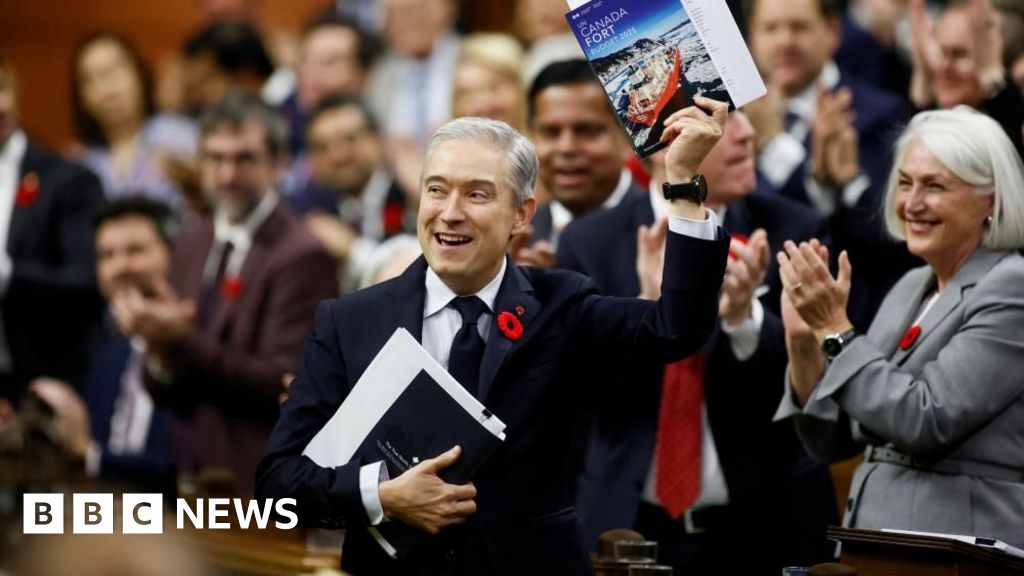Anticipating COP 30 | Friends of Science
Contributed by Robert Lyman © 2025. Robert Lyman’s bio can be read here.
COP 30, the United Nations Climate Conference, will convene from November 10 to 21, 2025 in Belem, Brazil. While it is often described as a single conference, it really entails parallel meetings of a number of UN bodies that have been established over many years. These include the 30th session of the Conference of the Parties to the Framework Convention on Climate Change, the 20th meeting of the Conference serving as the Meeting of the Parties to the Kyoto Protocol (CMP 20), and the seventh meeting of the Conference serving as the Meeting of the Parties to Paris Agreement (CMA 7). The 63rd sessions of the Subsidiary Body for Scientific and Technological Advice (SBSTA63) and the Subsidiary Body for Implementation (SBI 63) will also convene.
There will be innumerable meetings of various sub-groups.
With all of these bodies meeting, one might expect that much will be accomplished. In fact, as has been demonstrated in the past several COPs, these events usually serve as opportunities for the UN and various national governments and non-governmental organizations to put on a performance for the world’s media. The central plot of this drama is that the fate of the world hangs in the balance unless the wealthier countries agree to reduce their economic activity that causes greenhouse gas (GHG) emissions to increase and provide virtually unlimited funds to the developing countries which they in turn will allegedly use to reduce their emissions. There are many sub-plots. The challenge for the observer is to understand how much of the acting will result in real change.
In this article, I will describe the main agenda items.
The Setting for the Conference
COP30 is taking place at a time when the UN and climate activists around the world are claiming (once again) that the world is facing a calamity because of higher GHG emissions and the failure of member countries to meet the objectives set out in past agreements.
Image licensed from Adobe Stock.
On one hand, an unprecedented amount of money is being spent on non-hydrocarbon energy technologies. According to the International Energy Agency’s (IEA) World Energy Investment, capital flows to the energy sector in 2025 are set to rise to USD 3.3 trillion, a 2% rise from 2024. Around USD 2.2 trillion is going collectively to renewables, nuclear energy, electricity grids, carbon dioxide storage, low-emission fuels, efficiency and electrification, twice as much as the USD 1.1 trillion going to oil, natural gas and coal.
As impressive as these investment trends are, hydrocarbon energy continues to constitute over 80% of global primary energy use. Energy consumption is still driven largely by increases in world economic activity, and while uncertainty over world trade, manufacturing and investment risks reducing growth, the trends (fortunately for the world) are still upward. World oil consumption, which grew by an average of 1.3 million barrels per day during the two decades before the pandemic, is still rising at a rate just under one million barrels of oil per day per year. In 2024 world natural gas demand reached an all-time high of around 115 billion cubic metres (bcm), with over three-quarters of that growth coming from the emerging market and developing economies. The IEA’s Coal Mid-Year Update reported that global coal demand also increased to an all-time high in 2024 of around 8.8 billion tonnes, as rising consumption in China, India, Indonesia and other emerging economies more than offset declines in Europe, North America and northeast Asia. The IEA projects coal demand to rise to yet another all-time high in 2025.
The pending withdrawal of the United States from the Paris Agreement removes what would probably have been the largest single source of revenues for UN-endorsed GHG emissions reduction projects in developing countries. Whether European countries are prepared to sharply increase climate aid to make up for this loss seems highly doubtful. Canada’s climate aid was committed at the level of $5.3 billion over the 2021 to 2026 period; it would be surprising if at COP 30 Prime Minister Carney did not announce a significant increase in that aid over the next five years.
Attendance
Roughly 50,000 attendees are expected at COP 30 – down from the record of around 83,000 at COP 28 in Dubai and 67,000 in Baku last year. Belem is not a very large city, so there are not enough hotel rooms to accommodate so many. As a result, some countries have been forced to cut the size of their delegations.
Belem – Image licensed from Adobe Stock.
Presidency
The Brazilian Presidency of the Conference is Andre Aranha Correa do Lago. He has played a very active role in attempting to build on the results of COP 29 and add a special emphasis on the Global Goal on Adaptation (GGA) and the requirement that countries develop National Adaptation Plans (NAPs). While much of the effort of past COPs has been focused on commitments to mitigate climate change through reduced emissions and on financing, Brazil seeks to add a much increased emphasis on developing a common set of standards for plans and efforts to adapt to climate changes. These include:
- authorizing the UN to assess and evaluate countries’ adaptation efforts;
- advancing the Baku Adaptation Roadmap (BAR) to accelerate CGA delivery;
- increasing funding for adaptation; and
- developing “concrete, measurable indicators to track enhanced adaptive capacity, strengthened resilience, and reduce vulnerability”.
In other words, the Presidency will seek to open a whole new front in UN-directed national climate programs and spending.
Issues of Procedures and Process
Much discussion at COP30 may be on the results of the filing by member countries of their updated five-year Nationally Determined Contributions, the plans they have to reduce GHG emissions in the period 2031 to 2035. These were supposed to be filed no later than February, 2025. By mid-year, however, relatively few countries had done so. More to the discouragement of the COP organizers, the countries that had submitted their updated plans constituted only 19% of global emissions. Worse yet, the United States submission, made under the Biden Administration, is no longer valid after the US withdrawal from the Paris Agreement. As the US produces 11% of global emissions, the updated plans covered only 8% of the global total!
The UN has not published updated numbers, but it will do so before the conference in the form of a “synthesis report” indicating how far off-trend the member countries are from meeting the 2030 target. The synthesis report filed before COP 28 indicated that national mitigation targets fell short by 20.3 to 23.9 billion tonnes of carbon dioxide equivalent compared to the levels required allegedly to limit warming to 1.5 degrees C. by 2030. It is doubtful that this gap has been narrowed by much.
In the lead-up consultations, some countries have recommended that COP30 formally “acknowledge the progress and remaining gaps in the NDCs and lay out a pathway for accelerating climate action in the years ahead”. In other words, they want the UN to bring more pressure to bear on what is in the NDCs. Some countries – including China, India and Saudi Arabia – have insisted that assessing the NDCs (which, after all, are supposed to be independently determined by each country) are not on the COP30 agenda. The argument about what is and is not on the agenda could absorb much of the summit’s time. Saudi Arabia has urged instead that the Brazilian presidency focus on issues around finance and trade, which often refers to mechanisms such as the European Union’s forthcoming carbon border tax.
Other Substantive Issues
At COP29, countries agreed (many reluctantly) on a new collective quantified goal (NCQG) to “mobilize” at least USD 300 billion in climate mitigation aid annually by 2035 for developing countries, and to strive for USD 1.3 trillion per year over the same period. The Baku to Belem Finance Roadmap, jointly led by the COP 29 and COP30 presidencies, aims to set out how this can be achieved.
Agenda Item 8 is “Matters relating to finance”. In addition to discussions on mitigation aid, there will be debates about “Loss and Damage” (i.e. essentially referring to reparations that the more industrialized countries should pay to the developing countries for having produced GHG emissions in the past), technology transfer, and aid for the development of national adaptation plans.
The UN-backed global carbon market, known as the Paris Agreement Crediting Mechanism, has suffered in the past due to a lack of clear, mutually-agreed rules designed to ensure credibility, transparency and integrity. Carbon credits are essentially a mechanism whereby sponsors of emissions reduction measures in one country can trade those credits to allow organizations in other countries to meet regulation-imposed emissions limits. Key rules include how to establish a baseline standard (the emissions level that would have occurred without the project); how to account for any unintended increases in emissions that might happened elsewhere as a result of the project; how to avoid double-counting of emissions cuts; and how to avoid “reversals” or future leakages from carbon capture and storage projects. COP 30 is expected to approve the new rules.
Money, Money
While much of the time of COP30 will be taken up by discussions on NDCs, adaptation and carbon credits, the developing countries and the media will probably continue to focus on the financial issues. The “Baku to Belem Roadmap” is still under development and there has been no news as to the results of the COP presidencies in achieving a roadmap that will satisfy the developing countries and be acceptable to the donors.
The last few COP conferences have struggled to come up with agreements and announcements at the end that would give the appearance of progress towards the UN’s emissions reductions and funding goals. With each succeeding conference, that process become more and more difficult.
<img loading="lazy" decoding="async" data-attachment-id="11983" src="https://blog.friendsofscience.org/2025/11/04/anticipating-cop-30/belem-of-para-brazil/" data-orig-file="https://blog.friendsofscience.org/wp-content/uploads/2025/11/image004-scaled.jpg" data-orig-size="2560,1703" data-comments-opened="1" data-image-meta="{"aperture":"0","credit":"Vinicius Tupinamba – stock.adobe.com","camera":"","caption":"Sunset in the coast line of Belem of Para, Brazil","created_timestamp":"1442595566","copyright":"VINICIUS R TUPINAMBA","focal_length":"0","iso":"0","shutter_speed":"0","title":"Belem of Para, Brazil","orientation":"1"}" data-image-title="Belem of Para, Brazil" data-image-description data-image-caption="
Sunset in the coast line of Belem of Para, Brazil
” data-medium-file=”https://blog.friendsofscience.org/wp-content/uploads/2025/11/image004-300×200.jpg” data-large-file=”https://blog.friendsofscience.org/wp-content/uploads/2025/11/image004-1024×681.jpg” src=”https://blog.friendsofscience.org/wp-content/uploads/2025/11/image004-300×200.jpg” alt width=”606″ height=”404″ >
Image licensed from Adobe Stock.
Recent Top Stories
Sorry, we couldn't find any posts. Please try a different search.












